If you look in this thread, I show how the Nautaloss sealed spiral TL has essentially the same response as an open baffle - that is, it has very little back reflections to affect the frequency response. With that said, it will have (some) effect on the CSD. However, this effect would be the same for all drivers tested as they all have the same enclosure - which is not a "box" but a slowly tapering spiral, kind of like B&W's Nautilus - which serves as an acoustic "black hole".
http://www.diyaudio.com/forums/full-range/270094-objective-comparison-3in-4in-class-full-range-drivers.html
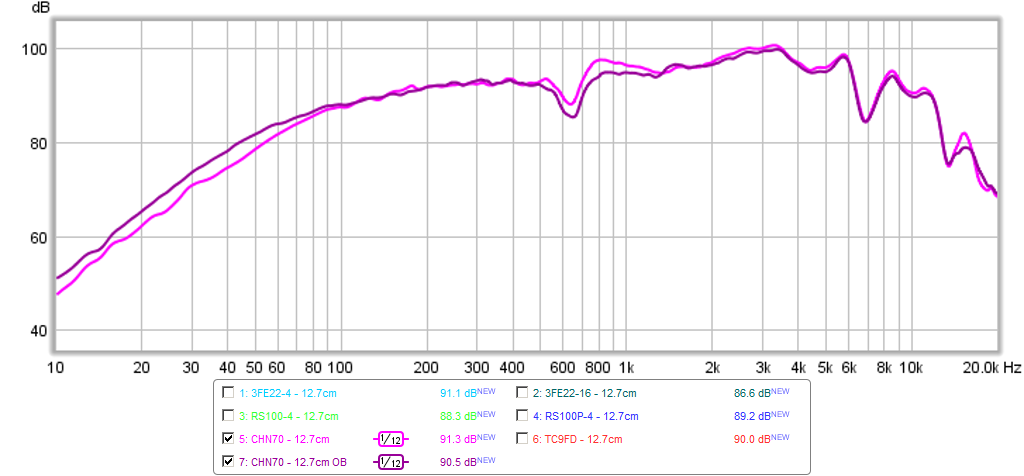
I stand corrected, without any effort of excuses😱)
Last edited:
I sincerely doubt this is about the right brand! After all, this was blind, despite some people wanted to derail the outcome by unwanted comments;o)
If the response is even AND MLSSA is good, people will fall to their knee's and pay homage to the superior driver. No matter what brand! Also I believe that MLSSA have to be done in an infinite baffle in order to get rid of possible internal reflections. I.e. not a boxed driver!!
Peter
Hear hear! A truer statement hasn't been made.
Exactly, material is not so important as long it's well done, no?
True. Even with cone made of water, if it is well done, it is good, no? 😉
In my opinion these tests shows that subjective opinions have a value. After all, most people preferred flat response.
FR is not the only thing that make up a driver. You will find out that many other things are "right" in the product that provide "right" FR. May be it is just about "right" manufacturer? 😀
Yes, as can be seen from later measurement results from X.
I sincerely doubt this is about the right brand!
What I'm trying to say is:
(1) There are many things to be measured, not only FR. In multi way systems, and with good drivers, everyone can make a ruler flat FR.
(2) Not the right brand, but the right people behind the product. The people who knows how to create good drivers.
Look at how similar the FR for ScanSpeak 10F and Vifa TG9 are, but they put so different price. Look also at Vifa TC9 FR and spectogram.
AB Acoustics also makes good drivers, but the think thank behind the products are mainly the same people behind the former ScanSpeak.
And Peerless, in my TXT I wrote but then deleted it, that I couldn't believe a manufacturer that I have great respect for can produce something like G. Their woofers are/were wonderful. Midwoofers are also very good.
But their midrange in this test (A) is designed for TV and sound bars, can you believe that?
If the response is even AND MLSSA is good, people will fall to their knee's and pay homage to the superior driver. No matter what brand!
You left out PRICE variable. With expertise (including production infrastructure) you can make similar quality products with less money.
But you are correct of course in your statements.
Peerless did not make G - that one is Mark Audio.
Yes. MA has good "reputation" in this website while I haven't heard any of their drivers so I had no idea which one is Peerless and which one is MA among A and G. But after being surprised with the terrible FR of one of their drivers in the first round I thought it can be similar in the second round. My (60% Peerless and 40% MA) judgement was simply based on uninformed subjective reputation.
I don't know anything about RESA, but your step response measurement of the Peerless shows that they probably did that on purpose.
2. The 20 Khz "zinger" on the P830986 - what about folks who don't have hearing that doesn't go that far? There's a null area below the HF bump. If people with hearing topping out ~16 Khz still perceive "air" on this driver, which part of the FR spectrum is likely to be the source?
Esperado, a recording engineer veteran, I think has stated somewhere that they deliberately added 40kHz peak to the recording so female voice has more air or something. Note that 40kHz is far beyond our hearing.
Hi Xrk971, thanks for the CSDs and the whole work.
You are welcome. What are your impressions of the CSD? Sometimes I wonder if
I should apply more smoothing like 1/12th octave rather than 1/48th.
Most CSD's I've seen use more smoothing and a scale out to -30 dB below the signal.
Maybe try that? At least with previous plots you're being brutally honest, but it makes theme harder to read. The spectrograms seem more smoothed by themselves in comparison. We have to remember that this is a speaker in an enclosure, same enclose for all speakers but still might be of influence to the plots.
Maybe try that? At least with previous plots you're being brutally honest, but it makes theme harder to read. The spectrograms seem more smoothed by themselves in comparison. We have to remember that this is a speaker in an enclosure, same enclose for all speakers but still might be of influence to the plots.
CSD with 1/6th oct smoothing
Wesayso,
Ok, I agree that the 1/48th was tough on the eyes. Here is 1/6th octave and I reduced the range to 4ms, window is still 3.7ms, 41 steps, and more vertical range.
TC9FD:
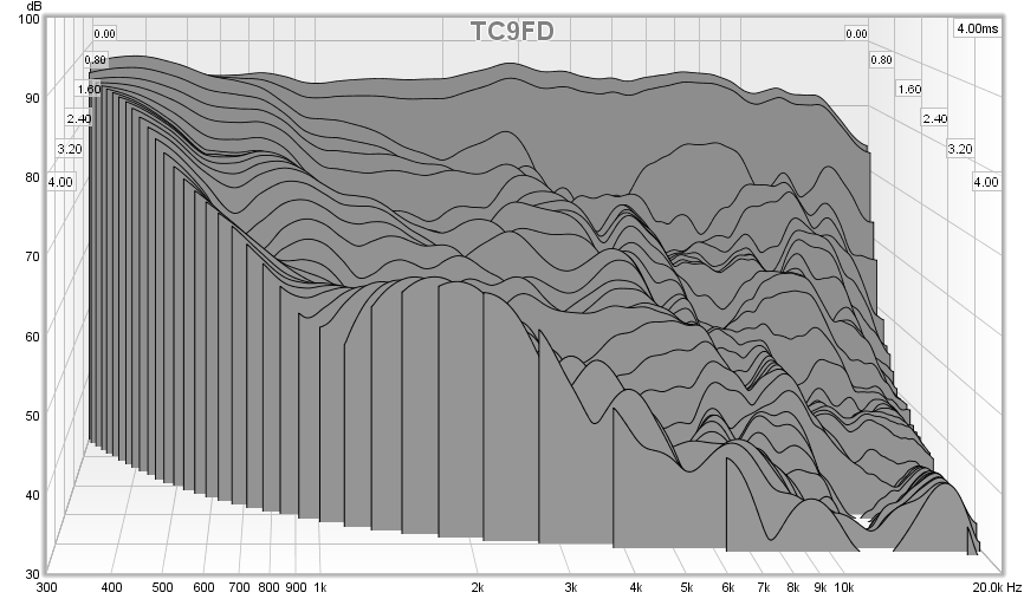
P830986:

W4-1320SB:
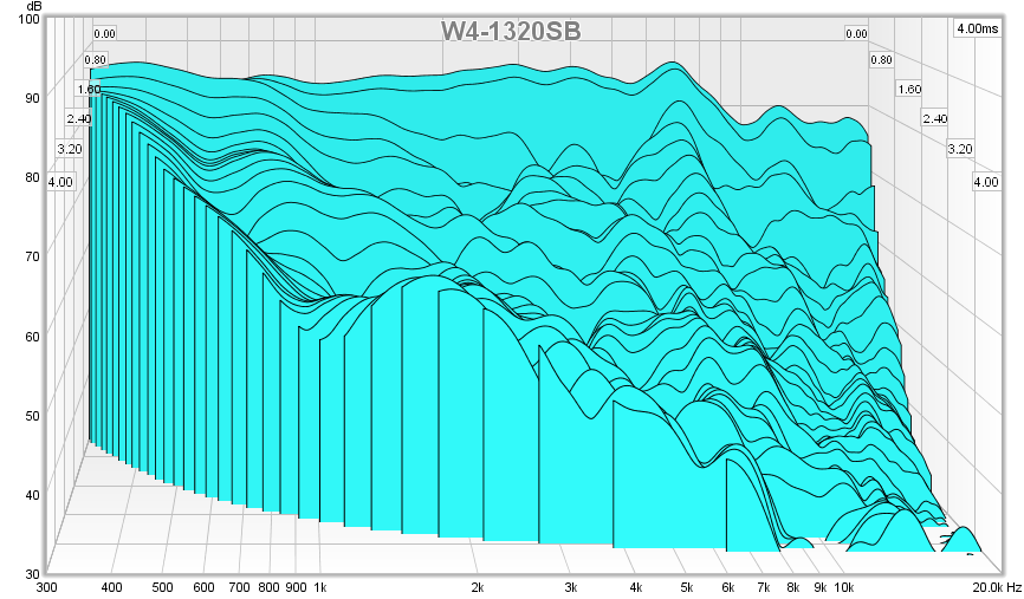
FF105WK:
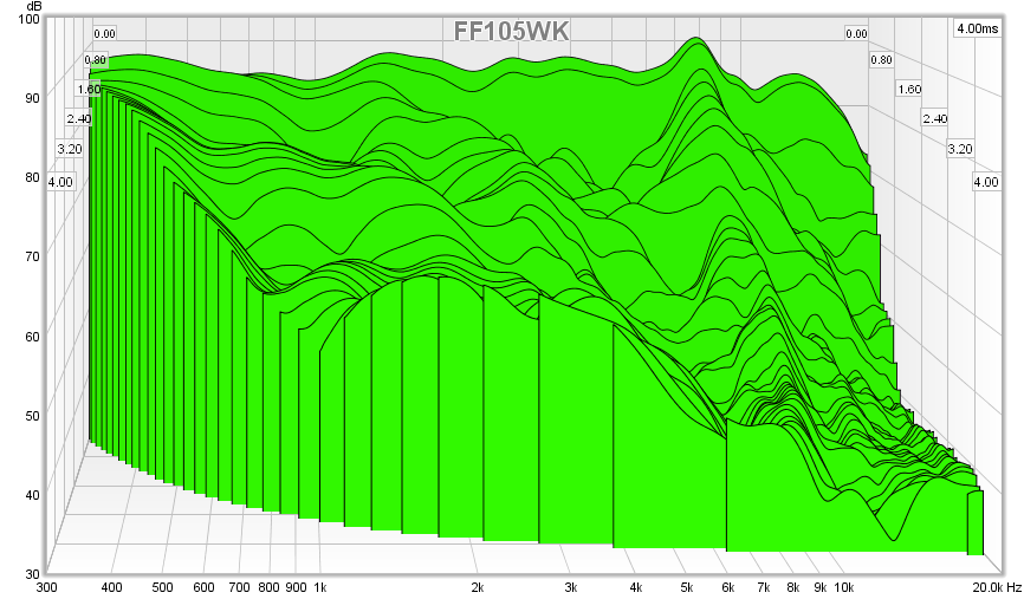
TG9FD:
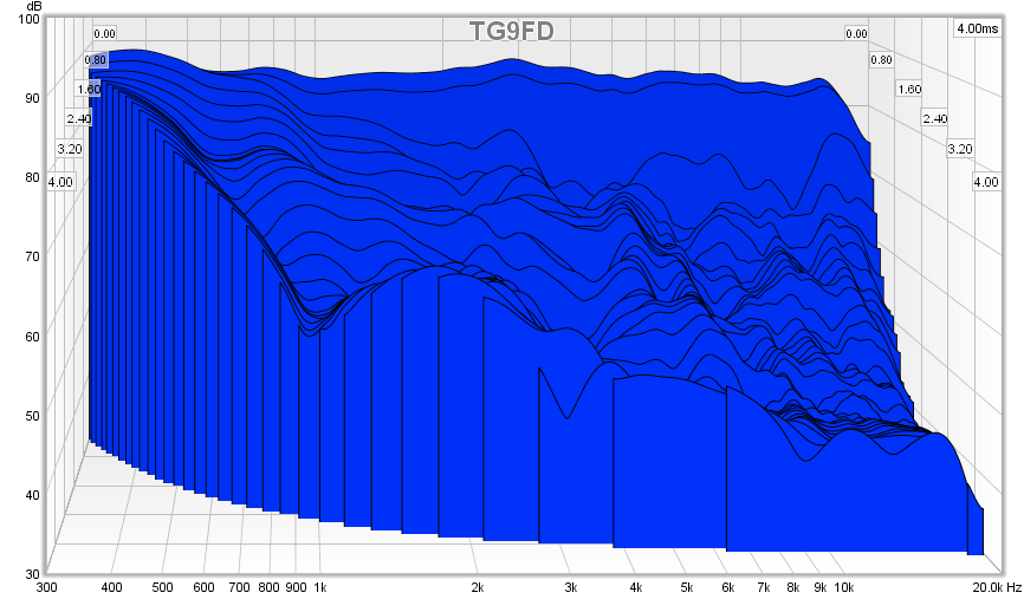
10F/8424:
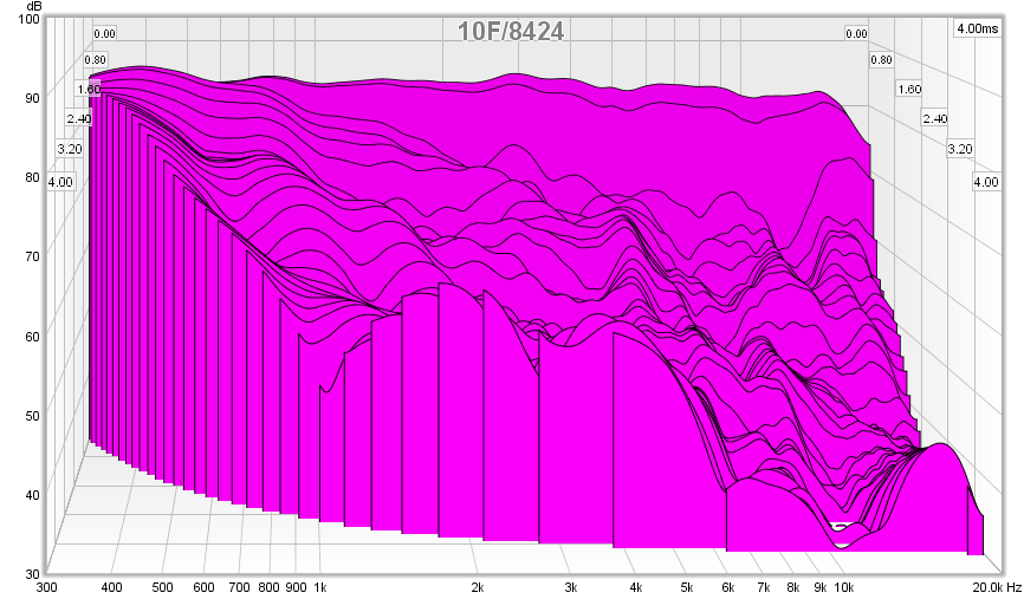
AHE:
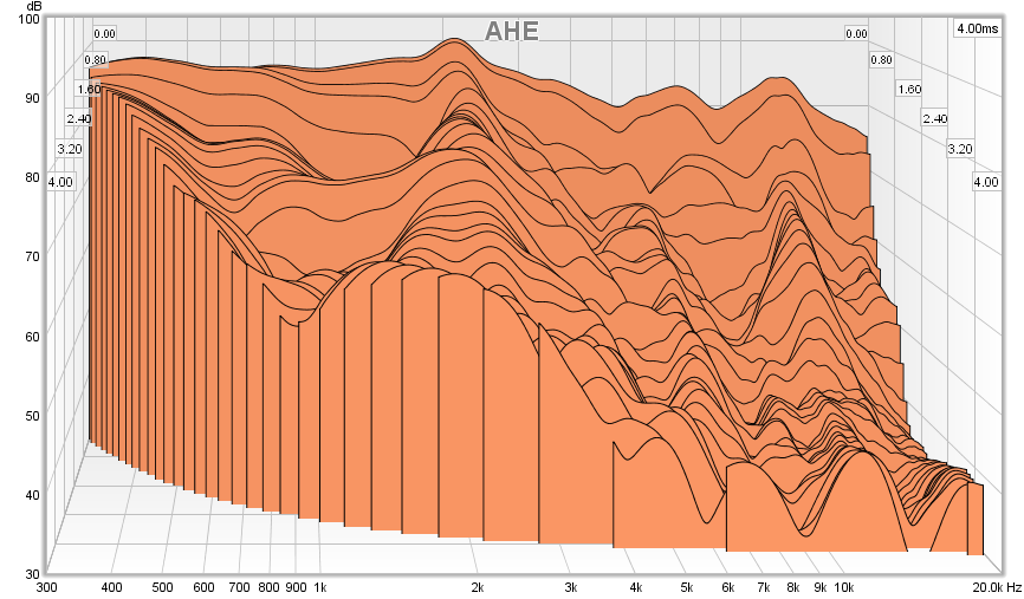
A7.3:
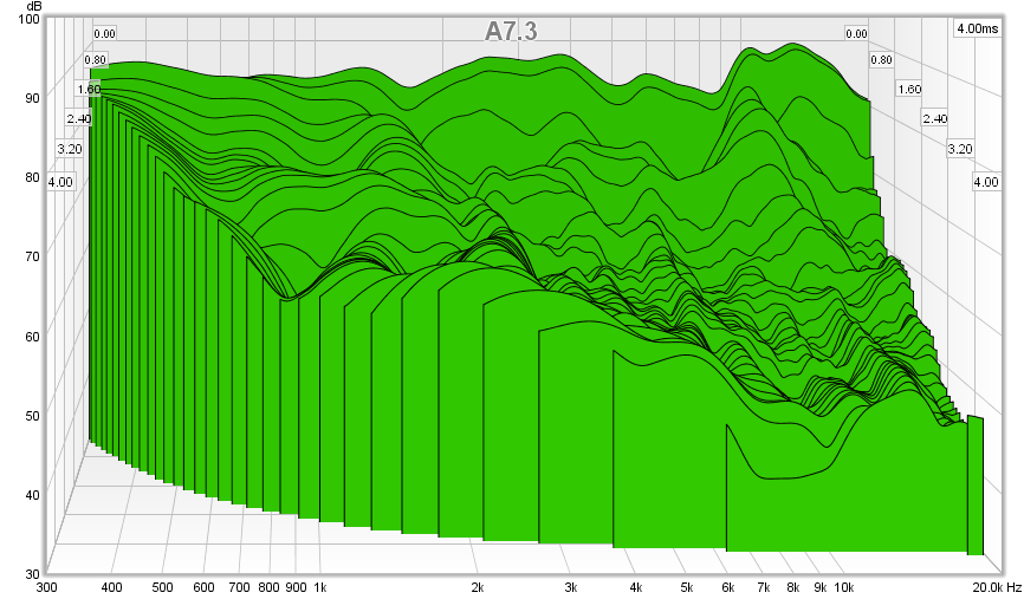
PA130-8:
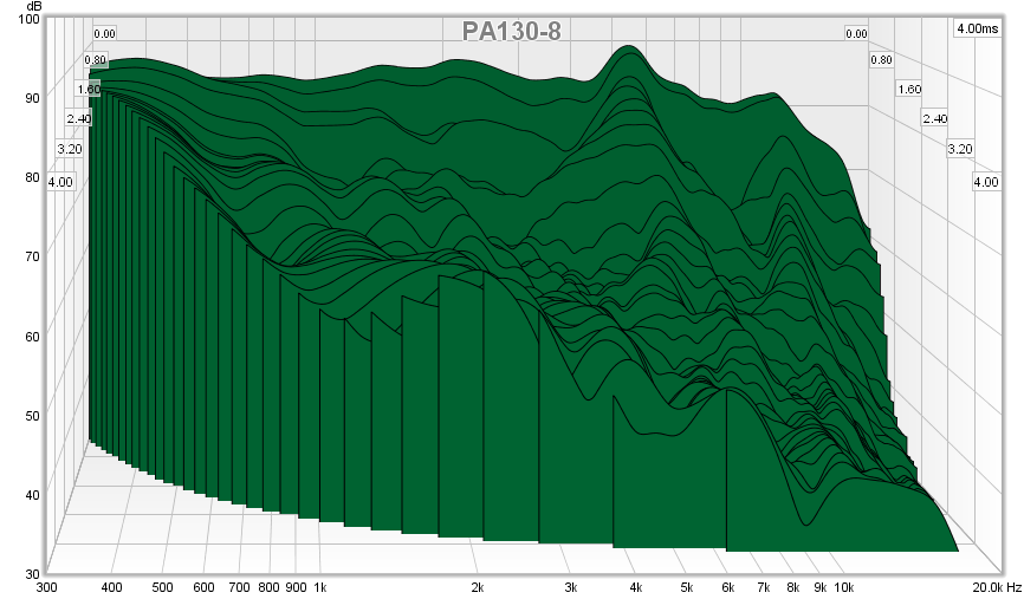
Wow, look at the 20kHz zinger on the P830986, it keeps going and going like a knife ridge on a mountain. At first, I thought the CSD of the TC9FD looked better than the more expensive 10F/8424, but on closer inspection, the critical HF region does appear to decay a bit faster on the 10F. If you look at high high the "cliff" on the front where the data cuts off due to the window size, you can get a sense of which driver still has some energy left to dissipate and where that lies.
I think these CSD plot settings are much more useful for viewing and making some interpretations.
Wesayso,
Ok, I agree that the 1/48th was tough on the eyes. Here is 1/6th octave and I reduced the range to 4ms, window is still 3.7ms, 41 steps, and more vertical range.
TC9FD:

P830986:

W4-1320SB:

FF105WK:

TG9FD:

10F/8424:

AHE:

A7.3:

PA130-8:

Wow, look at the 20kHz zinger on the P830986, it keeps going and going like a knife ridge on a mountain. At first, I thought the CSD of the TC9FD looked better than the more expensive 10F/8424, but on closer inspection, the critical HF region does appear to decay a bit faster on the 10F. If you look at high high the "cliff" on the front where the data cuts off due to the window size, you can get a sense of which driver still has some energy left to dissipate and where that lies.
I think these CSD plot settings are much more useful for viewing and making some interpretations.
Attachments
-
 tc9fd-csd.png186.7 KB · Views: 454
tc9fd-csd.png186.7 KB · Views: 454 -
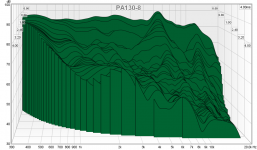 pa130-8-csd.png197.2 KB · Views: 437
pa130-8-csd.png197.2 KB · Views: 437 -
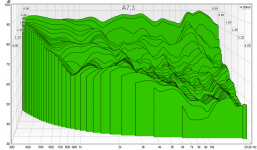 a7.3-csd.png211.8 KB · Views: 442
a7.3-csd.png211.8 KB · Views: 442 -
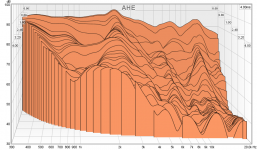 ahe-csd.png274.5 KB · Views: 443
ahe-csd.png274.5 KB · Views: 443 -
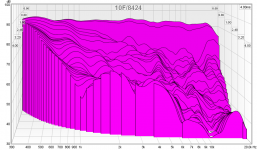 10f-8424-csd.png206.4 KB · Views: 461
10f-8424-csd.png206.4 KB · Views: 461 -
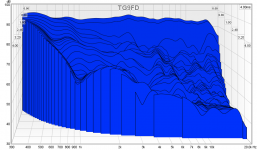 tg9fd-csd.png199.2 KB · Views: 448
tg9fd-csd.png199.2 KB · Views: 448 -
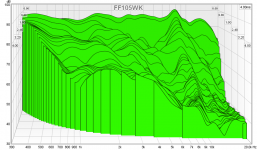 ff105wk-csd.png214.3 KB · Views: 449
ff105wk-csd.png214.3 KB · Views: 449 -
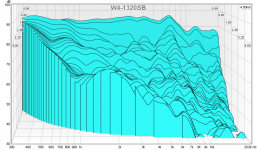 w4-1320sb-csd.png249.2 KB · Views: 447
w4-1320sb-csd.png249.2 KB · Views: 447 -
 p830986-csd.png199 KB · Views: 445
p830986-csd.png199 KB · Views: 445
Last edited:
Harmonic Distortion of All Drivers
Here is the harmonic distortion up to 7th harmonic.
TC9FD:
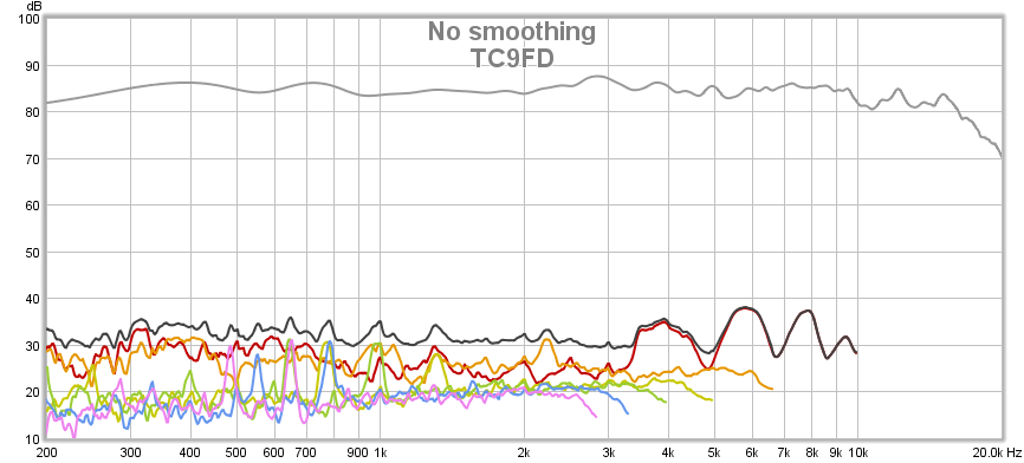
P830986:
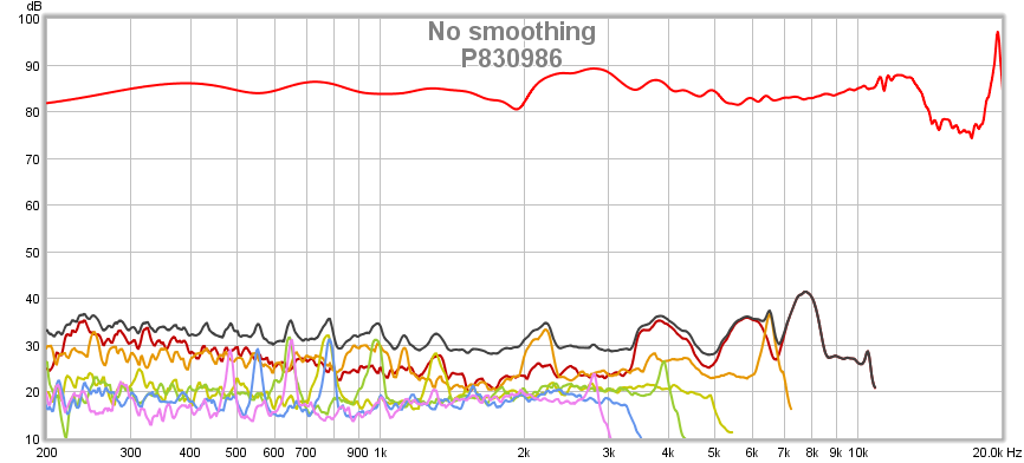
W4-1320SB:
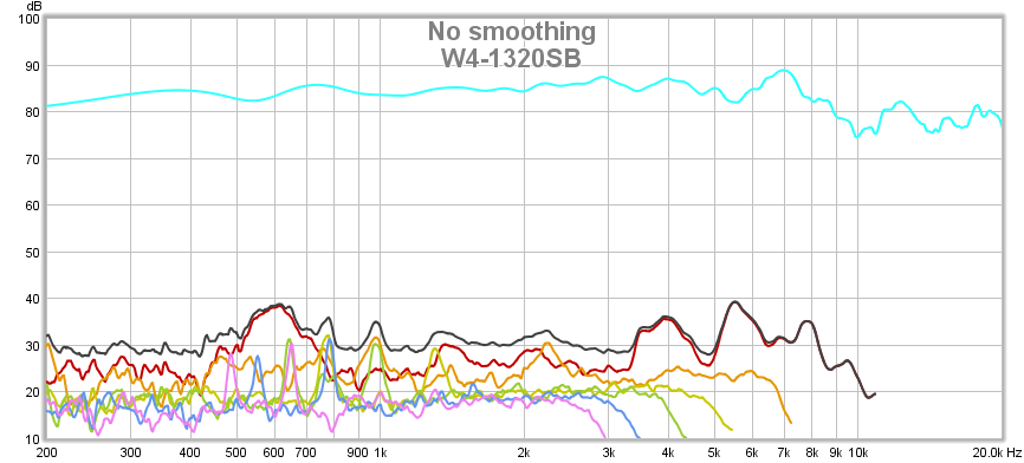
FF105WK:
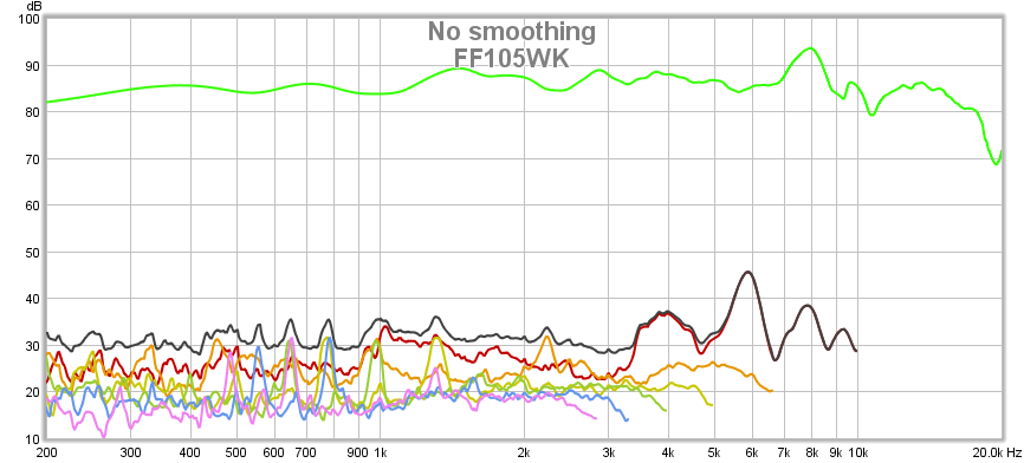
TG9FD:
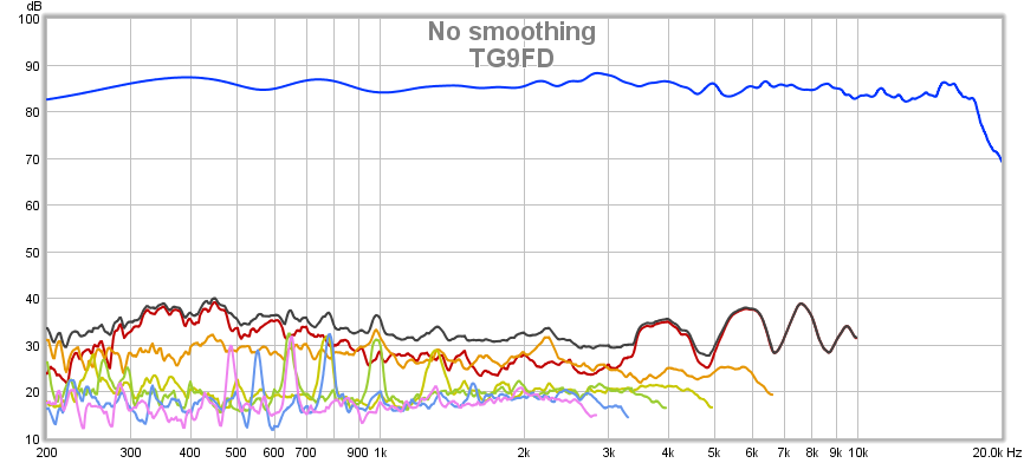
10F/8424:
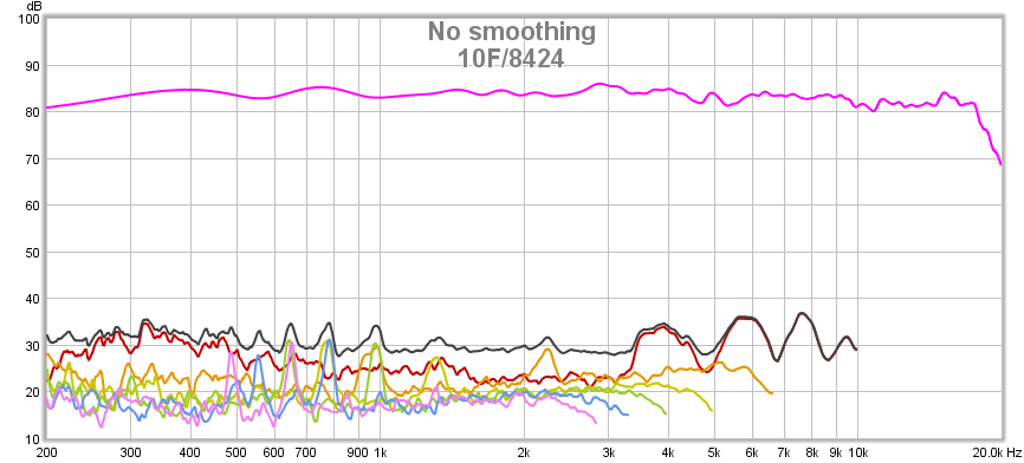
AHE:

A7.3:
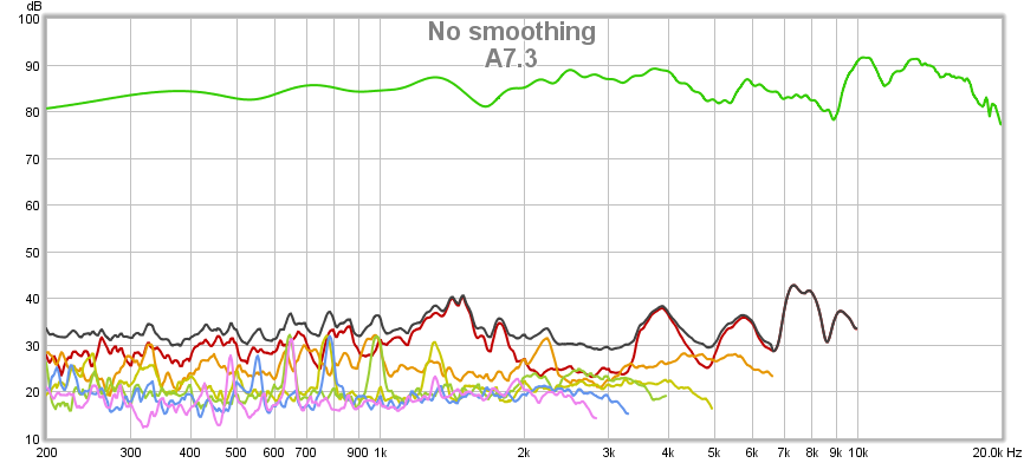
PA130-8:
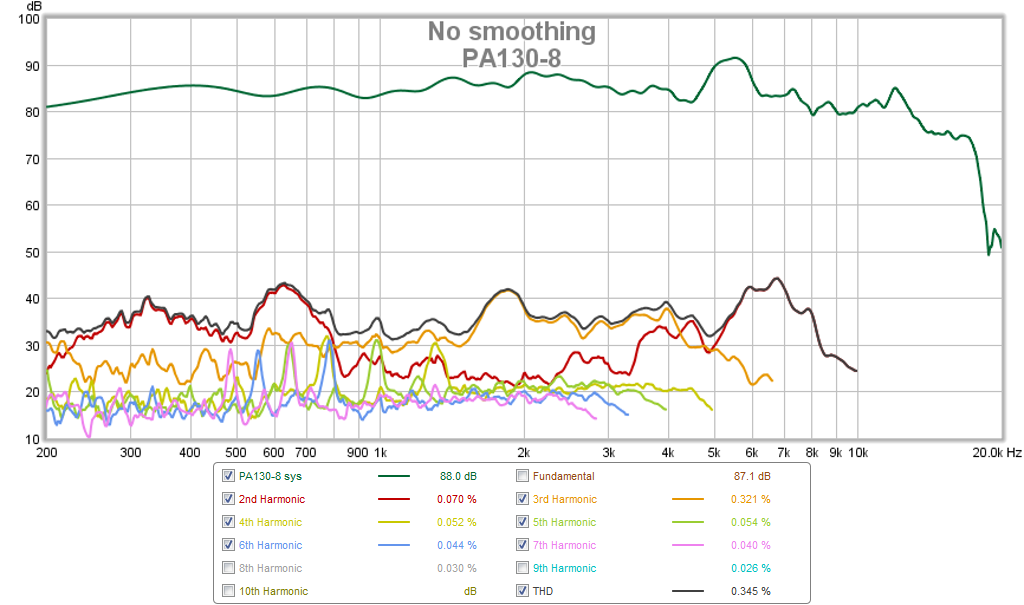
Here is the harmonic distortion up to 7th harmonic.
TC9FD:

P830986:

W4-1320SB:

FF105WK:

TG9FD:

10F/8424:

AHE:

A7.3:

PA130-8:

Attachments
-
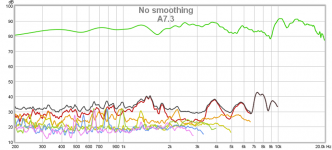 a7.3-hd.png131.2 KB · Views: 697
a7.3-hd.png131.2 KB · Views: 697 -
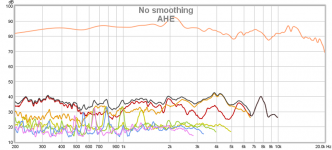 ahe-hd.png132.6 KB · Views: 429
ahe-hd.png132.6 KB · Views: 429 -
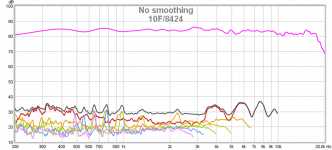 10f-8424-hd.png120 KB · Views: 788
10f-8424-hd.png120 KB · Views: 788 -
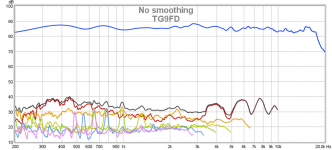 tg9fd-hd.png128 KB · Views: 423
tg9fd-hd.png128 KB · Views: 423 -
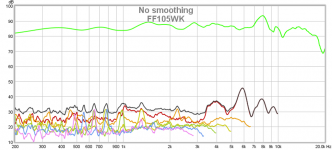 ff105wk-hd.png132.1 KB · Views: 755
ff105wk-hd.png132.1 KB · Views: 755 -
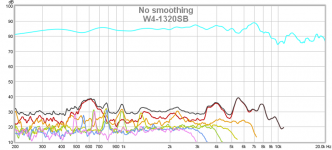 w4-1320sb-hd.png126.2 KB · Views: 434
w4-1320sb-hd.png126.2 KB · Views: 434 -
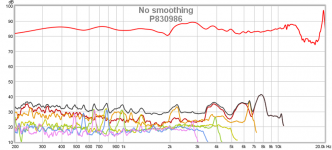 p830986-hd.png132.8 KB · Views: 428
p830986-hd.png132.8 KB · Views: 428 -
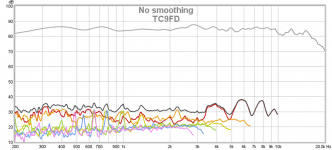 tc9fd-hd.png123.1 KB · Views: 692
tc9fd-hd.png123.1 KB · Views: 692 -
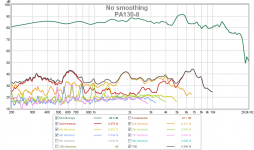 pa130-8-hd.png142.2 KB · Views: 420
pa130-8-hd.png142.2 KB · Views: 420
Last edited:
Esperado, a recording engineer veteran, I think has stated somewhere that they deliberately added 40kHz peak to the recording so female voice has more air or something. Note that 40kHz is far beyond our hearing.
40kHz is way above the Nyquist limit for standard Red Book audio and also significantly above what any normal vocal mic can actually pick up. It would have absolutely zero effect and would be completely filtered out by the brick wall filtering. The only way this would do anything is if the filter was of a low Q variety and would result in tilting up the top octaves of the audio band.
40kHz is way above the Nyquist limit for standard Red Book audio and also significantly above what any normal vocal mic can actually pick up. It would have absolutely zero effect and would be completely filtered out by the brick wall filtering. The only way this would do anything is if the filter was of a low Q variety and would result in tilting up the top octaves of the audio band.
I don't want to trigger a subjectivist versus objectivist debate here 😀 I know that my brain is much better than whatever knowledge that I have gathered (if you know what that means).
"it was a common practice, in recording studios, to use high Q >=40Khz bell filters to bring more air to some female voices, while nobody is able to hear such a frequency, neither most of the speakers to reproduce them..."
Makes sense for analog or High Res digital, not for Red Book. I believe that's why B&W want their tweeters to have output to way above 20 KHz.
There will be DAC's out there that can't even reproduce it even with High Res signals though.
There will be DAC's out there that can't even reproduce it even with High Res signals though.
Esperado, a recording engineer veteran, I think has stated somewhere that they deliberately added 40kHz peak to the recording so female voice has more air or something. Note that 40kHz is far beyond our hearing.
The problem with female voices is that they have practically no overtones/harmonics compared to male voices.
If you add for example 10k via eq to a male voice you increase perceived 'airiness' (for want of a better word) but if you do the same thing to a female voice you just increase noise.
This makes female voices quite difficult to work with because they have to be absolutely right to start with as there is not much range to work with.
Recording/mixing male voices is MUCH easier as they cover a larger range and eq'ing doesn't immediately change the tonal character as it does with female voices.
Adding 40k to a female voice does absolutely nothing since not even the best reel-to-reel can get up there and apart from a very few mics (which are not usually used for vocals) they won't pick it up either.
Due to Nyquist this is a mute point for digital recording or delivery formats.
"it was a common practice, in recording studios, to use high Q >=40Khz bell filters to bring more air to some female voices, while nobody is able to hear such a frequency, neither most of the speakers to reproduce them..."
Yes because such an analogue filter, even if relatively high Q, would trickle down into the audio band and add a degree of lift to the audible high frequencies. If the filter was placed solely on the mic feed then it'd do what you'd expect it to, add some 'air' to female voices.
When I originally said 'high Q' I was really meaning the antithesis of a brick wall type filter, giving extra energy to literally 40kHz+ and only a tiny spread of frequencies below it.
An analogue variant would have to have a very high Q for it to have no effect within the audible band, but then this also brings up the point of what do people consider high Q? From the point of view of box design anything with a Q of greater than 1 would be considered high, yet a driver resonance with a Q of 1 would be considered quite low.
Getting a little more back on topic though I think it's nice to see people taking the results of this test seriously. It would be very easy to simply dismiss the results due to the way the test was conducted, but nevertheless it has proven reasonably capable.
The design of full range drivers is quite different to that of non full rangers in that most people go full range with the intent of not needing to use a crossover filter of any kind. Although this kind of methodology is inherently flawed it is nevertheless realistic. To that end it certainly makes sense for any manufacturer to ensure that their driver has resonant free operation throughout its entire operating range with a smooth roll off at either end.
Scan speak have obviously done their homework with the 10F and it pays off. Ever since the 10F was released it has become a de-facto recommendation to anyone wanting a small and easy to use midrange driver, the fact it also work very nicely as a full ranger isn't much of a surprise. I wish I could say the same for Scans 2" driver, the 5F, but that driver is a bit of a disaster. It has a horrible frequency response when compared to its larger sibling. Glass fibre cones have always been known to be very well damped with benign breakup, paper otoh can be ragged, especially if its stiff and the 5F is definitely of the latter camp. Why they didn't go with a glass fibre cone for the 5F I do not know. It is built incredibly well, but the main problem with the 5F is its price. Madisound sells these for $57 whereas you can get the SB65WBAC for only $33.50, which not only measures far better but has much nicer specifications too.
- Home
- Loudspeakers
- Full Range
- A Subjective Blind Comparison of 3in to 5in drivers - Round 2